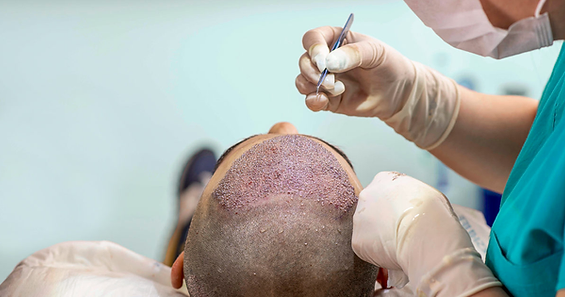Hair loss is a silent thief of confidence, affecting millions worldwide. Yet, for those looking to reclaim their identity, hair transplantation offers more than a solution—it promises transformation. Imagine waking up to a mirror that reflects not just your face but your confidence restored. This life-changing procedure blends the precision of science with the finesse of artistry, paving the way to a new you. However, beneath its promising allure lies a need for caution against misinformation and unqualified practitioners.
The Evolution of Hair Transplantation: From Concept to Reality
The roots of hair transplantation can be traced to the early 20th century, but the modern era began in the 1950s with the groundbreaking concept of “donor dominance.” This principle—that hair follicles retain their genetic resistance to balding when transplanted—laid the foundation for today’s advanced techniques. From the strip-based FUT (Follicular Unit Transplantation) to the minimally invasive FUE (Follicular Unit Extraction), the field has advanced to deliver results that are not only effective but also natural-looking and enduring.
How FUE is Done
Follicular Unit Extraction (FUE) is a minimally invasive hair transplant technique that involves extracting individual hair follicles directly from the donor area, typically the back or sides of the scalp. These follicles are then implanted into the recipient area. By avoiding a linear incision, FUE leaves no visible scar, making it ideal for patients who prefer shorter hairstyles. The technique leverages the concept of donor dominance, ensuring that the transplanted hair continues to grow naturally in its new location.
Addressing Common Patient Questions
Patients considering a hair transplant often have pressing questions. Here are answers to the most frequently asked concerns:
- Is the procedure painful?
Modern hair transplants are performed under local anesthesia, ensuring minimal discomfort. Most patients report only mild soreness post-surgery, which is short-lived and manageable with prescribed medications.
- What happens to the transplanted hair?
Transplanted hair initially sheds within a few weeks—a natural part of the hair growth cycle. New growth typically begins at three to four months, with full results visible within 12 to 18 months.
- Who is a suitable candidate?
Ideal candidates are those with stable hair loss, sufficient donor hair, and realistic expectations. A detailed consultation with a certified surgeon is essential to determine eligibility and craft a personalized treatment plan.
- Does the hair taken from the donor area grow back?
No, hair extracted from the donor area does not grow back. However, careful extraction techniques ensure that the remaining hair in the donor area remains healthy and appears natural.
- What is DHI (Direct Hair Implantation)?
DHI involves implanting hair follicles directly into the scalp using a specialized tool. This method eliminates the need for creating recipient site incisions, ensuring precise placement and minimal handling of grafts.
- How long does the procedure take?
A typical hair transplant session takes 4 to 8 hours, depending on the number of grafts required and the technique used.
- Is the patient discharged the same day?
Yes, hair transplant procedures are generally performed on an outpatient basis. Patients are discharged the same day, with detailed aftercare instructions provided by the surgeon.
- Will the results look natural?
When performed by a skilled surgeon, modern techniques ensure results that blend seamlessly with your natural hair, restoring both density and confidence.
- What about robotic hair transplantation?
Robotic hair transplantation, like the ARTAS system, focuses on graft extraction. While it offers precision, the implantation of grafts must still be done manually by the surgeon. Despite its technological appeal, the high cost and limited automation make it less impressive when compared to skilled manual techniques.
- How soon can I return to work?
Most patients can return to non-strenuous work within two to five days following the procedure. However, activities like heavy lifting or intense exercise should be avoided for at least two weeks to ensure optimal healing.
Recent Advances in Hair Transplantation Techniques and Tools
Hair transplantation continues to evolve with innovations that enhance both outcomes and patient comfort. Modern punches, such as serrated and trumpet punches, are designed to minimize trauma and maximize graft survival. Automated systems now assist in precise graft extractions, while advancements in anesthesia have reduced recovery times. Integrating Platelet-Rich Plasma (PRP) and exosomal treatments into procedures boosts graft survival and promotes natural growth. Additionally, Bio-Enhanced FUE, which incorporates regenerative medicine during extraction, is becoming a game-changer for achieving faster recovery and improved hair density.
Stem cell-assisted hair transplants and hybrid techniques combining FUE with DHI for superior density and placement precision are also gaining traction. These advancements ensure not just better results but a more comfortable and effective experience for patients.
The Importance of a Natural-Looking Hairline
A natural-looking hairline is more than just a medical achievement; it’s a work of art. Designing a hairline requires meticulous planning to ensure it complements the patient’s facial features, age, and natural hair pattern. A poorly crafted hairline can ruin an otherwise successful transplant. A hairline is not just a frame for the face; it’s a reflection of individuality and character.
Addressing Post-Procedure Care
One aspect often overlooked by patients is the importance of post-transplant care. Following the surgeon’s guidelines for cleaning, avoiding strenuous activities, and using prescribed medications is essential for optimal recovery and graft survival. Patients should also be aware of the expected shedding phase and trust the process, knowing that new growth will emerge stronger and healthier.
The Menace of Unqualified Practitioners
One of the most alarming trends in hair transplantation is the rise of uncertified technicians and non-medical operators performing these intricate procedures. Often lured by low-cost treatments, patients risk complications like infections, scarring, unnatural hairlines, and even permanent damage to the donor area.
According to the latest NMC (National Medical Commission) guidelines, only qualified dermatologists (MD in Dermatology) and plastic surgeons (MCh in Plastic Surgery) are authorized to perform hair transplants.Entrusting your hair transplant to an unqualified practitioner is like letting a novice pilot fly a jet—the risks far outweigh the rewards. Patients should verify their clinic’s credentials and ensure adherence to these strict guidelines.
Risks and Precautions
Like any surgical procedure, hair transplantation carries risks such as infection, scarring, or suboptimal growth. However, these risks are significantly minimized when the procedure is performed by a qualified and experienced surgeon in a sterile, well-equipped environment. Patients must diligently research their chosen clinic and surgeon to ensure safety and efficacy.
Conclusion
Hair transplantation is not just a medical procedure; it is a journey of self-renewal. It represents reclaiming control over your appearance and embracing transformation. With careful planning, expert execution, and diligent aftercare, hair restoration becomes more than an enhancement—it’s a statement of confidence.
Your hair is an integral part of your identity, and its restoration deserves the best care. Avoid the pitfalls of uncertified practitioners and prioritize safety and expertise.Confidence begins at the roots. With every transplanted follicle, you plant the seeds of a renewed sense of self. Choose wisely, trust the process, and embrace the transformation.
(The Author is Renowned Dermatologist and Hair Transplant Surgeon. Also Director & Founder of DERMIS-Skin & Hair Clinic. Feedback: [email protected])








